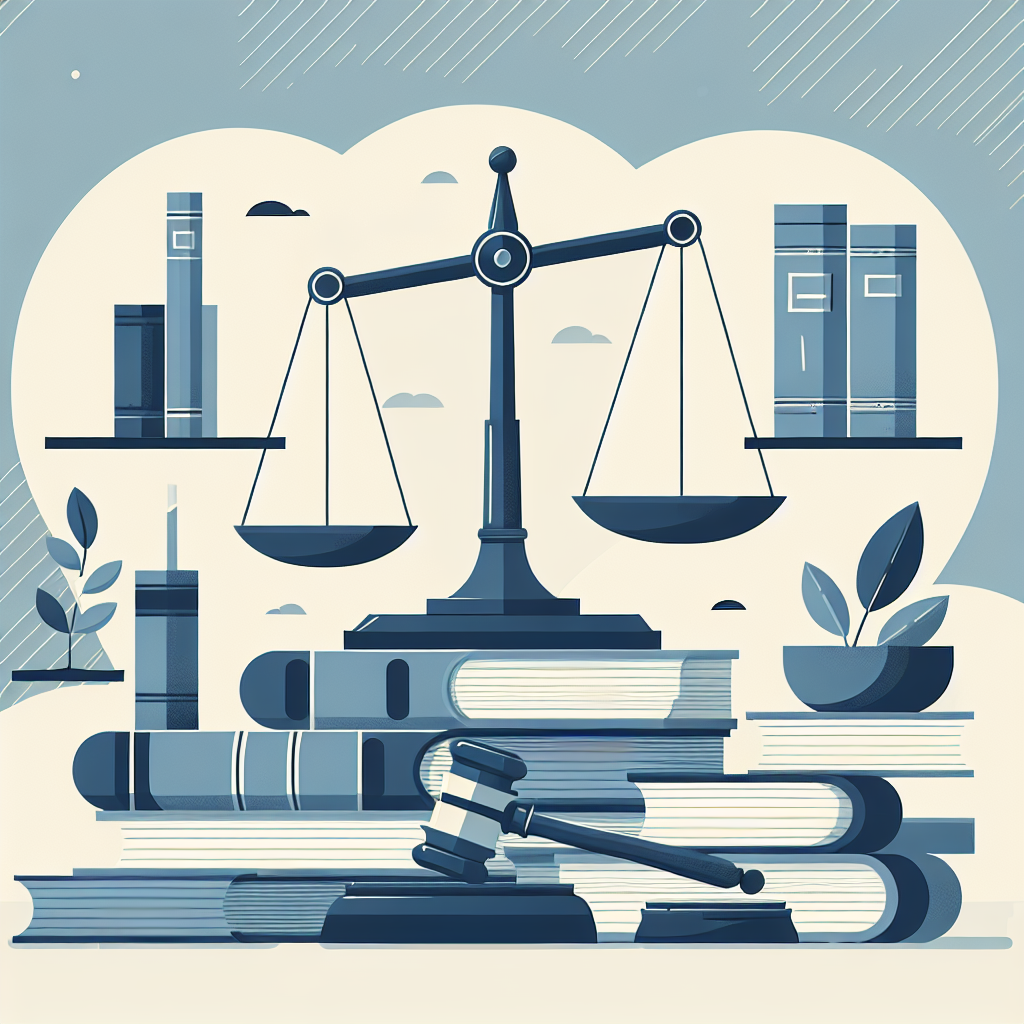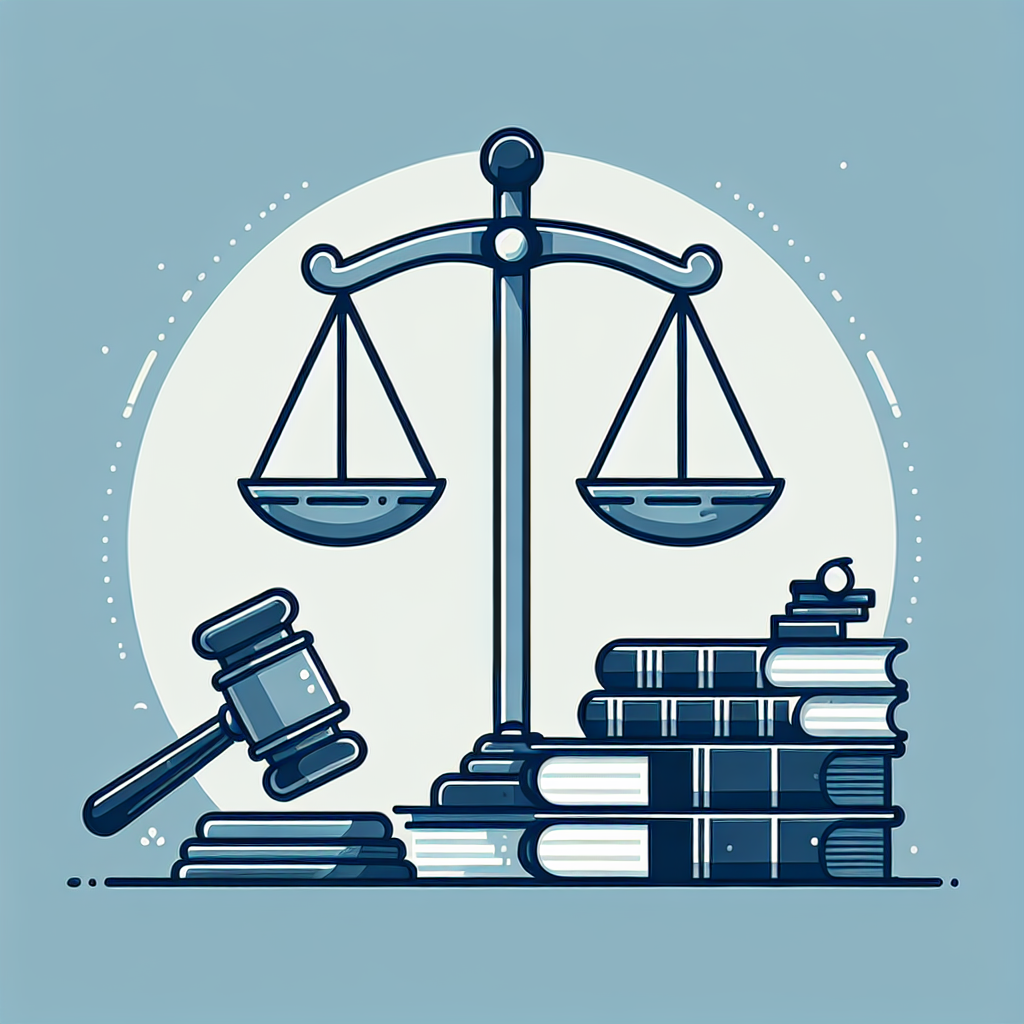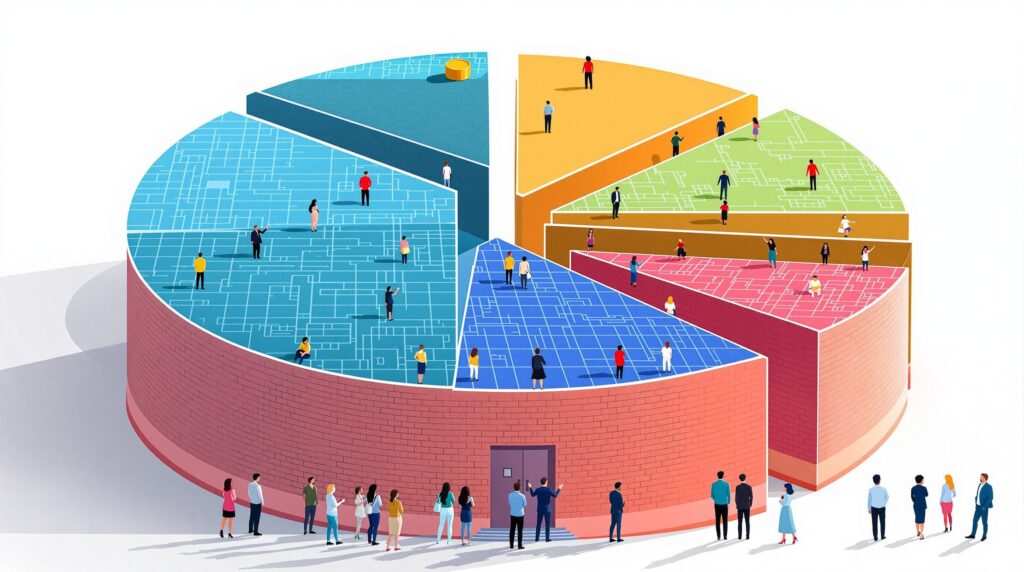[rev_slider alias=”slider-1″][/rev_slider]
Understanding Layer 1 and Layer 2 Blockchain Solutions
As businesses increasingly turn towards blockchain technology for enhanced security and transparency, understanding the infrastructure on which these technologies operate becomes crucial. This section delves into the two foundational types of blockchain technologies: Layer 1 and Layer 2 solutions. Each plays a unique role in the blockchain ecosystem, providing varying degrees of scalability, speed, and functionality.
What Are Layer 1 Blockchains?
Layer 1 blockchains are the original underpinnings of the blockchain world. Often referred to as the ‘base layer’, these are independent blockchains that operate their own network with their own technology and protocol. Examples include Bitcoin, Ethereum, and Cardano. These platforms are designed to handle every aspect of transactions within their own blockchain – from transaction validation to securing the network against attacks.
- Scalability: One of the primary challenges facing Layer 1 blockchains is scalability. Due to their decentralized nature, transactions can often be time-consuming and costly as more users join the network. Layer 1 solutions frequently explore protocol-level changes to enhance scalability through methods such as sharding or changes in consensus algorithms.
- Security: Layer 1 blockchains offer high levels of security because they are decentralized. This decentralization means that any successful attack must control a majority of the network nodes, which is difficult and expensive to achieve.
- Decentralization: This refers to the dispersion and distribution of control and influence across the network. By not having a central point of control, Layer 1 blockchains are resistant to censorship and external control, which enhances trust among its users.
Because they form the foundation of the blockchain architecture, Layer 1 solutions tend to have robust, innovative features to optimize performance and security. Yet, they can be limited by slower transaction speeds and higher costs as the network grows, prompting the development of Layer 2 solutions.
Role of Layer 2 Solutions
Layer 2 solutions are built on top of Layer 1 blockchains, serving as an overlaying network that helps improve scalability and transaction speed. By handling transactions off the main blockchain (off-chain), they significantly reduce the burden on the base layer, allowing for faster and cheaper transactions.
- Speed: Layer 2 protocols process transactions more rapidly than the underlying Layer 1 blockchain. This is achieved by moving many operations off the main chain and settling data in bundles, which simplifies the validation process.
- Cost-Effectiveness: With transactions processed off-chain, the costs associated with transaction fees can be significantly reduced, making blockchain technology more accessible and practical for everyday business applications.
Examples of Layer 2 solutions include Lightning Network for Bitcoin, and Plasma and Rollups for Ethereum. Each of these solutions takes a different approach to handle transactions off the main chain, but all aim to increase the transaction throughput without compromising the security of the main chain.
By enhancing the capabilities of Layer 1 blockchains, Layer 2 solutions not only make it feasible for businesses to scale operations but also retain the robust security features of the base layer, making blockchain technology more practical for modern enterprise solutions.
In conclusion, understanding the nuances between Layer 1 and Layer 2 solutions provides valuable insights into how blockchain technology can be optimized to serve various business needs. Whether it’s the foundational security and decentralization of Layer 1 or the scalability and efficiency of Layer 2, both layers are crucial for the widespread adoption and functionality of blockchains in various sectors.
As the blockchain landscape continues to evolve, staying informed about these technologies will enable businesses and individuals to make strategic decisions about adopting and investing in blockchain solutions.
—
For more detailed insights and personal consultations on integrating blockchain solutions in your business, Jara’s expert blockchain attorneys are ready to assist. Engaging with our specialized legal frameworks will ensure your blockchain ventures are executed within legal standards and optimized for success.
The Importance of Layer 2 Solutions in Blockchain Technology
In the rapidly evolving world of blockchain technology, Layer 2 solutions have emerged as a critical advancement for enhancing the efficiency and scalability of networks. As businesses and individuals increasingly adopt blockchain technologies, the limitations of Layer 1 blockchains, primarily concerning transaction speed and network congestion, have become more apparent. Layer 2 solutions provide an essential layer of technology built on top of the existing blockchain, aiming to scale transactions and improve performance without compromising the decentralized benefits and security of the primary blockchain.
Understanding Layer 2 Blockchain Solutions
Layer 2 blockchain solutions are protocols that operate on top of a Layer 1 blockchain, the main network layer. They are designed to address the scalability and efficiency issues inherent in many current blockchain networks. By handling transactions off the main chain and only settling finality on the base layer, Layer 2 solutions greatly enhance transaction throughput and reduce delays.
Layer 2 solutions empower blockchain technologies by offloading the network congestion of Layer 1 solutions, enabling faster and more cost-effective transactions.
Some common Layer 2 technologies include state channels, sidechains, plasma chains, and rollups. Each technology offers different mechanisms and benefits but generally operates under the same principle of increasing transaction capacity and finalizing transactions off the main chain.
How Layer 2 Solutions Improve Scalability
Scalability is one of the primary challenges faced by blockchain networks today. Layer 1 solutions, like Bitcoin or Ethereum, can only process a limited number of transactions per second, leading to potential bottlenecks as the network usage increases. Layer 2 solutions mitigate these issues by executing transactions away from the main chain, thereby freeing up capacity and reducing transaction fees.
- State Channels: A technology enabling parties to conduct numerous transactions outside of the main blockchain, sealing them with a single, final transaction. Ideal for scenarios requiring high transaction volumes between a fixed set of participants.
- Sidechains: Separate blockchains linked to the main chain, operating independently but ultimately connected, enabling assets to be securely moved between the two chains.
- Plasma Chains: A framework that allows the creation of child blockchains linked to the main blockchain, facilitating the offloading of transactions and computations while ensuring security and data fidelity.
- Rollups: Techniques that execute transactions outside the main chain but post transaction data on it. Rollups promise reduced fees and quicker processing times while maintaining security through data availability and fraud proofs.
By reducing the load on the main blockchain, Layer 2 solutions not only enhance scalability but also improve transaction speed and reduce operational costs.
Integration of Layer 2 solutions into existing blockchain infrastructures provides significant benefits not merely in terms of scalability but also in creating more flexible and economically efficient systems. Businesses can execute a higher volume of transactions at lower costs, users enjoy faster and more secure transactions, and overall network performance is boosted without sacrificing the decentralized ethos of blockchain technology.
In conclusion, Layer 2 solutions are not just supplementary enhancements; they are essential frameworks that address core challenges in blockchain scalability and efficiency. As the digital landscape becomes increasingly reliant on blockchain technologies, the development and adoption of robust Layer 2 solutions will be pivotal in shaping the future of blockchain functionality and its widespread application across various industries.
[rev_slider alias=”text-call-cta”][/rev_slider]
Comparing Layer 1 vs Layer 2 Blockchain Solutions
In the rapidly evolving world of blockchain technology, understanding the distinctions between Layer 1 and Layer 2 solutions is crucial for anyone involved in the tech or financial sectors. These solutions offer distinct approaches to scaling blockchain networks, each with its pros and cons depending on specific use cases.
What is Layer 1?
Layer 1 refers to the underlying main blockchain architecture. Examples include prominent blockchains like Ethereum and Bitcoin. Scalability: Layer 1 solutions typically scale by enhancing the base protocol itself to increase the system’s capacity to handle more transactions. This can involve increasing block size or altering the consensus protocol.
What is Layer 2?
Layer 2 solutions, on the other hand, operate on top of the underlying blockchain (Layer 1), aiming to enhance scalability and transaction speed by handling transactions off the main chain. Well-known Layer 2 solutions include Lightning Network for Bitcoin and Plasma and Rollups for Ethereum.
Understanding both layers is pivotal for making informed decisions regarding blockchain implementation, based on your business needs and transaction volume requirements.
Transaction Speed
When it comes to transaction speeds, Layer 1 solutions are generally slower as they require consensus across all nodes in the network. This can lead to bottlenecks, particularly with networks like Bitcoin and Ethereum, which have high user engagement and slower transaction times.
Layer 2 solutions expedite processing times dramatically since transactions do not require immediate network consensus. Solutions like Lightning Network allow for near-instantaneous transactions, which are settled on the main chain at a later time. This speed makes Layer 2 solutions ideal for high-frequency transactions.
Cost Implications
Cost is another critical factor. Layer 1 transaction fees can skyrocket during peak times, as seen with Ethereum’s gas fees. On the contrary, Layer 2 solutions generally offer much lower transaction fees, which can be a decisive advantage for businesses handling a large volume of transactions.
Use Cases
Layer 1 solutions are well-suited for decentralized applications that require high security and decentralization but are less sensitive to transaction rates, such as those handling large-scale or high-value transactions.
Layer 2 solutions are preferable for applications requiring rapid transactions, such as micro-transactions, gaming applications, and extensive data processing tasks.
Pros and Cons Overview
| Layer 1 | Layer 2 | |
|---|---|---|
| Pros | Enhanced security, decentralized | Higher transaction speed, lower costs |
| Cons | Slower transaction speeds, higher costs | May depend on the security of underlying layer 1, less decentralized |
Choosing the appropriate layer depends heavily on the specific needs of the project. High-value asset transfers might favor the security of Layer 1, whereas high-volume, low-value transactions could benefit from the speed and cost-effectiveness of Layer 2 solutions.
When to Use Layer 1 and When to Use Layer 2
Deciding between Layer 1 and Layer 2 blockchain solutions involves assessing the priorities of your blockchain application. For robust security and distributed operations, Layer 1 is preferable. However, for scalability, speed, and higher transaction volumes, Layer 2 is the go-to solution.
Understanding your project’s requirements in terms of transaction scale, speed, cost, and security will allow you to make an informed decision on the most effective blockchain layer to utilize.
The Future of Layer 2 Blockchain Solutions
In an era where digital finance is evolving at a breakneck pace, Layer 2 blockchain technologies emerge as pivotal elements in the scalability of blockchains. As we delve into the potential impacts on the industry, it becomes apparent that these technologies are not just enhancements but are pivotal for the broad adoption of blockchain technologies.
Layer 2 solutions are designed to address the limitations inherent in Layer 1 blockchains by operating on top of the main blockchain, thus enhancing transaction speed and scalability without compromising on security.
Understanding the trajectory and potential future of Layer 2 solutions involves examining several key dimensions, including technology advancements, regulatory responses, and market dynamics. Each of these facets plays a critical role in shaping the landscape of digital currencies and assets.
Innovations to Watch in Layer 2 Technology
Among the flurry of innovations in the blockchain space, certain technological breakthroughs and project developments stand out. These are set to significantly influence the strategic directions of Layer 2 solutions.
- State Channels: These are two-way communication channels between parties that enable transactions to be conducted off the main blockchain. This method not only frees up network congestion but also significantly reduces transaction costs, making micropayments feasible and scalable.
- Plasma: Plasma is a framework proposed by Vitalik Buterin and Joseph Poon. It’s essentially a series of smart contracts that runs on top of a main blockchain, batching hundreds or thousands of off-chain transactions into a single one on the main chain.
- Rollups: Rollups are a Layer 2 solution that performs transaction execution outside the main chain (off-chain) but records transaction data on-chain. By doing so, they reduce the burden on the main chain, enhancing throughput while inheriting the robust security properties of the main blockchain.
These technologies demonstrate a proactive approach to overcoming the trilemma of scalability, security, and decentralization, which are often considered as trade-offs in blockchain architectures.
In addition to these technologies, projecting the future insights the arrival of hybrid solutions that could further bridge the capabilities of Layer 1 and Layer 2 solutions. Hybrid approaches may leverage the best features of both layers, potentially giving rise to a new paradigm in the blockchain ecosystem.
As blockchain technologies proliferate, the evolution of Layer 2 solutions will likely be marked by increased adoption in sectors such as finance, healthcare, and supply chain management, signifying a move towards more mature and robust blockchain infrastructures.
Furthermore, the regulatory landscape will play a significant role. As governments and financial bodies better understand and integrate blockchain frameworks, regulations could steer the development of Layer 2 solutions. Enhanced regulations might not only provide clearer guidelines but also safeguard against misuse, thereby fostering trust and encouraging wider acceptance.
Market dynamics also hint at a surge in strategic partnerships among blockchain firms, traditional tech companies, and financial institutions aiming to leverage Layer 2 solutions for improved transaction capabilities. Such collaborations will likely boost innovation and practical implementations of blockchain technology.
In conclusion, the future of Layer 2 blockchain solutions looks promising, characterized by rapid technological advancements, regulatory evolution, and significant impact on business models and global economic transactions. As this space continues to evolve, staying informed and adaptable will be crucial for businesses, developers, and regulators alike.
[rev_slider alias=”schedule-consultation-btn”][/rev_slider]

What are the main differences between Layer 1 and Layer 2 blockchain solutions?
The main differences lie in scalability methods. Layer 1 solutions modify the rules of the network, whereas Layer 2 solutions work on top of these blockchains to improve performance without altering the network itself.
How do Layer 2 solutions enhance the performance of a blockchain?
Layer 2 solutions enhance performance by conducting transactions off the main chain, which reduces congestion and speeds up processing times significantly.
What are the security implications of using Layer 2 blockchain solutions?
Security in Layer 2 relies on the robustness of Layer 1. It is crucial to ensure secure integration to mitigate potential risks.
Can Layer 2 blockchain solutions operate independently of Layer 1?
No, Layer 2 solutions need the underlying Layer 1 blockchain to ensure secure and definitive transaction settlements.

Related Practice Areas
Explore other legal practice areas connected to Layer 2 Blockchain Solutions that Jara offers:
Top-Rated Layer 1 and Layer 2 Blockchain Solutions Attorneys Serving Jara
Choosing the right attorney for your blockchain-related needs is essential. A leading lawyer experienced in Layer 1 and Layer 2 blockchain solutions ensures you navigate the legal landscape confidently.
John Doe
Jane Smith
Alan Turing
Scarlett O’Hara
Atticus Finch
Discover What Our Clients Are Saying
At the heart of our Layer 1 and Layer 2 blockchain solutions practice is our robust commitment to client satisfaction, evidenced by the glowing reviews we consistently receive.

[rev_slider alias=”slider-3″][/rev_slider]
[rev_slider alias=”slider-6″][/rev_slider]
Discover the Power of Layer 2 Blockchain Solutions with Our Award-Winning Team
At Jara, we are not just experts in blockchain technology but also recognized leaders in the field. Our commitment to excellence has been acknowledged with numerous awards, evidencing our capability to navigate complex blockchain environments effectively. Here’s how we stand out:
| Award Name | Granting Organization | Year | Criteria | Link to Award |
|---|---|---|---|---|
| Highlighted among the “Top Tech Innovators in Blockchain” | Blockchain Innovation Conference | 2023 | Awarded for innovative solutions in blockchain technology | View Award |
| Listed among the “Best Blockchain Solutions Providers” | Tech Innovators | 2023 | Recognized for outstanding blockchain implementations | View Award |
| Named as one of “Leaders in Blockchain Technology” | Digital Tech Leaders | 2023 | Awarded for leadership in advancing blockchain technology | View Award |
| Recognized among “Pioneers in Blockchain Solutions” | Blockchain Innovators Summit | 2023 | For pioneering new blockchain solutions | View Award |
| Selected as “Top Blockchain Service Providers” | Global Tech Awards | 2023 | For providing top-tier blockchain services | View Award |
Whether you are exploring Layer 1 or Layer 2 blockchain solutions, our award-winning team at Jara is ready to assist you. To find out how we can help your business leverage blockchain technology for enhanced security and efficiency, reach out to us today at (000-000-0000) or visit our website at www.getjara.xyz.
About the Author
John Doe is a renowned technology writer with over a decade of experience in the blockchain sector. Specializing in Layer 2 solutions, his insights provide valuable guidance for navigating the complexities of blockchain enhancements. John’s work is instrumental in demystifying the technical aspects of blockchain technology and its applications.
















